Ocellate River Stingray Potamotrygon motoro
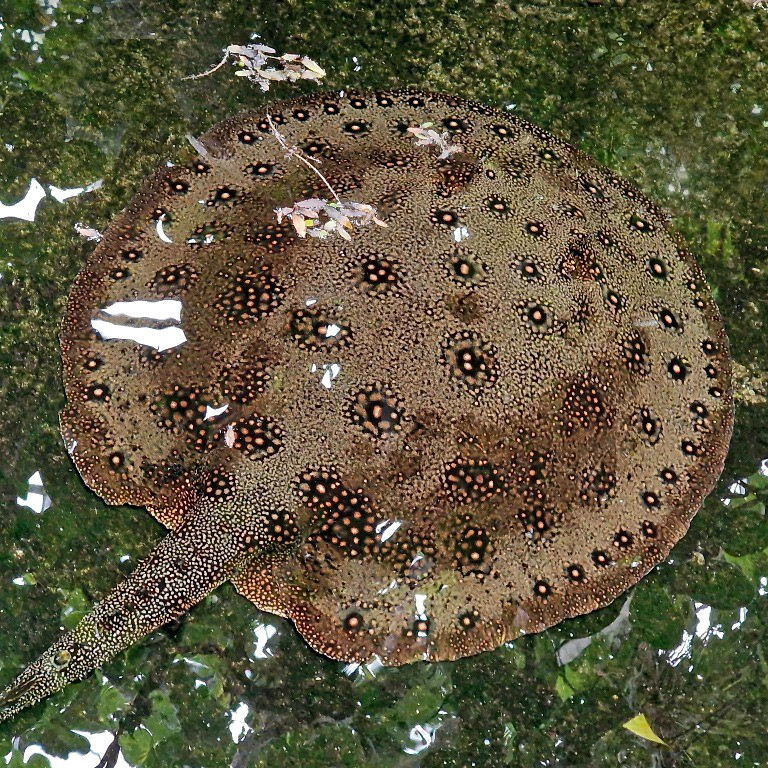
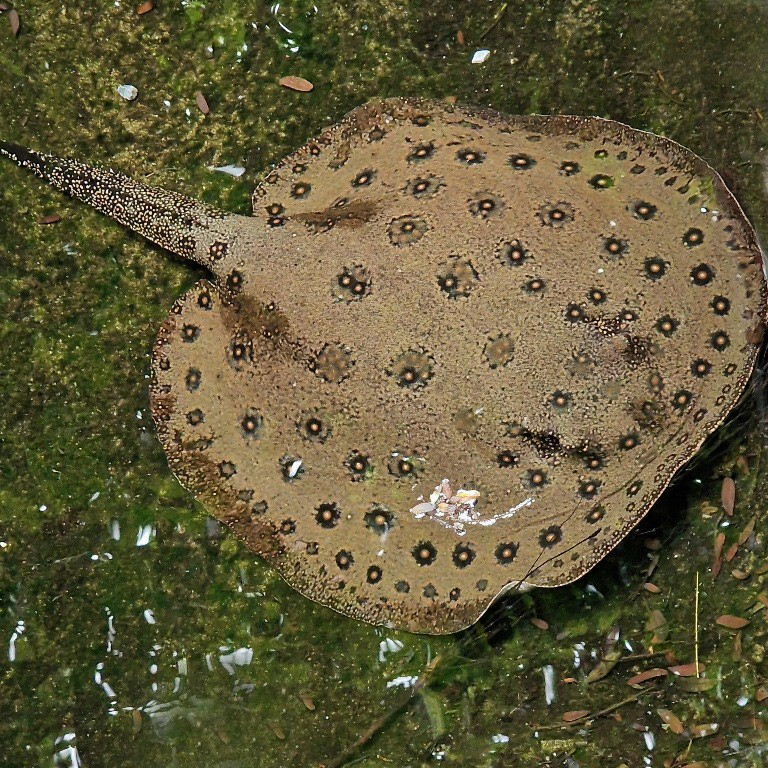
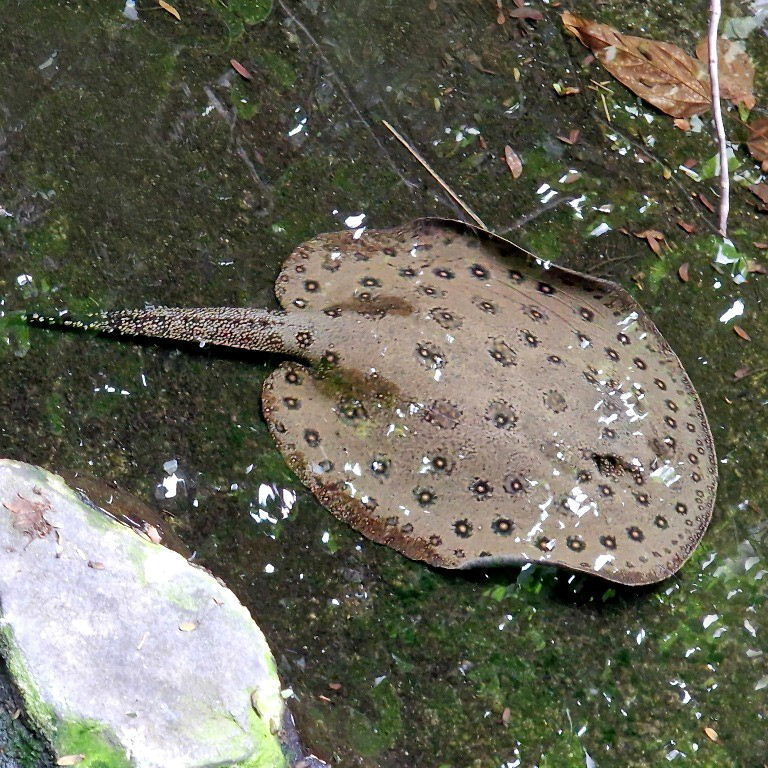
The Ocellate River Stingray, also called Ocellated and Freshwater Stingray, is one of several freshwater stingrays native
to South American river systems, this one including Peru, Bolivia, Colombia, Paraguay, Argentina and Brazil.



A disc-shaped body, it has a brownish or greyish base colour with orange or yellow spots with dark borders.
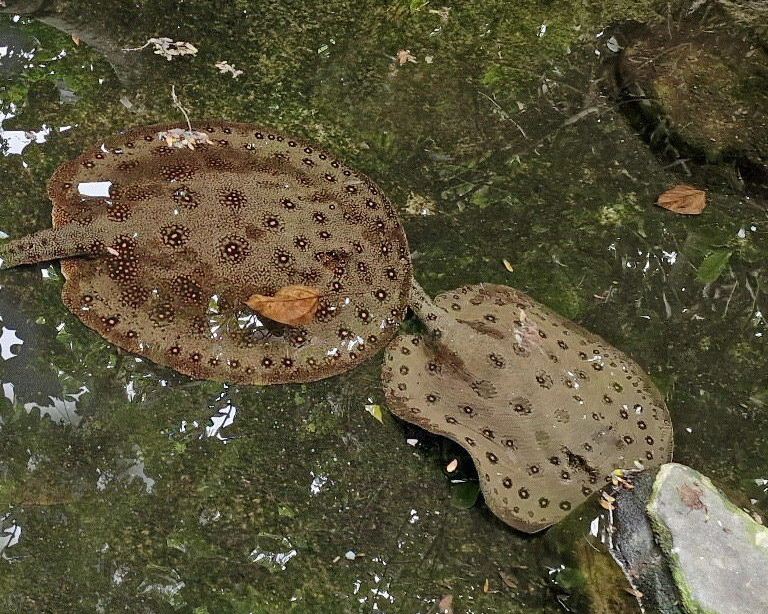


Large for a river ray, it can grow to nearly a metre diameter excluding its thorned tail which has a venomous sting.
The underside is mainly white mottled with grey and contains the mouth.
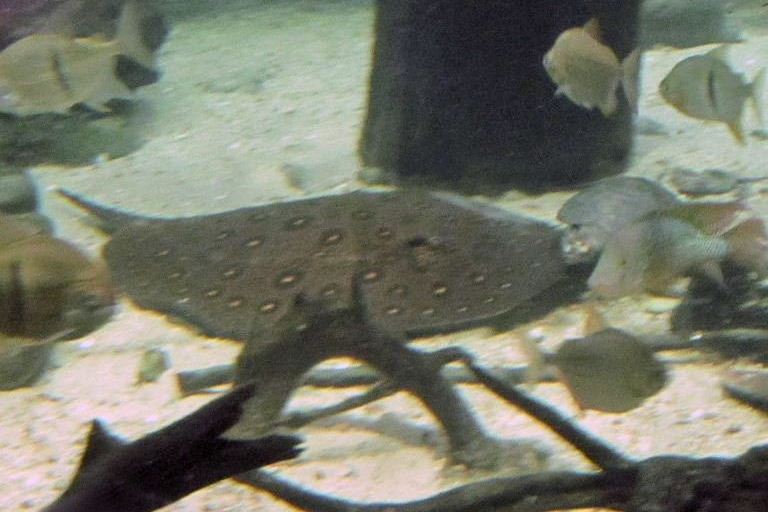
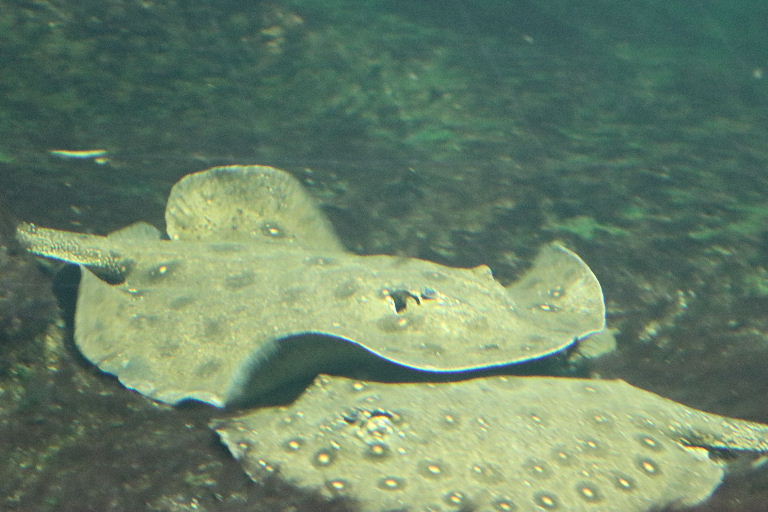
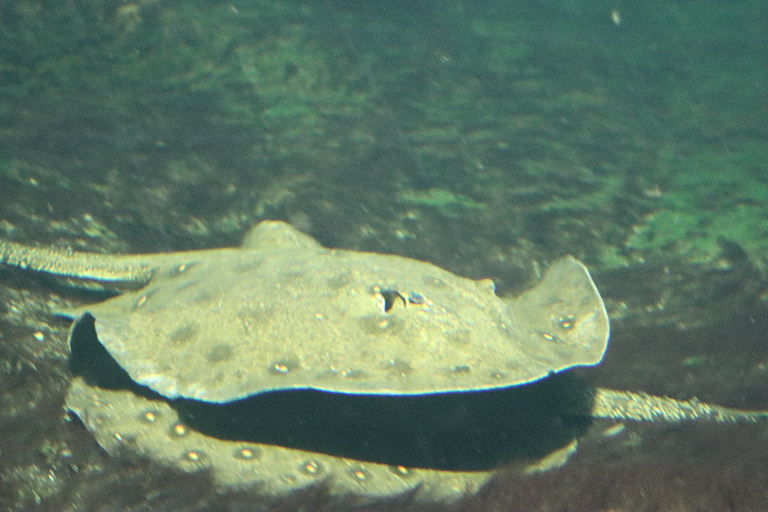
Habitat is mainly sandy or muddy banks and river/lake beds where it can burrow to hide.
It is threatened by hunting, habitat disturbance and dam construction.
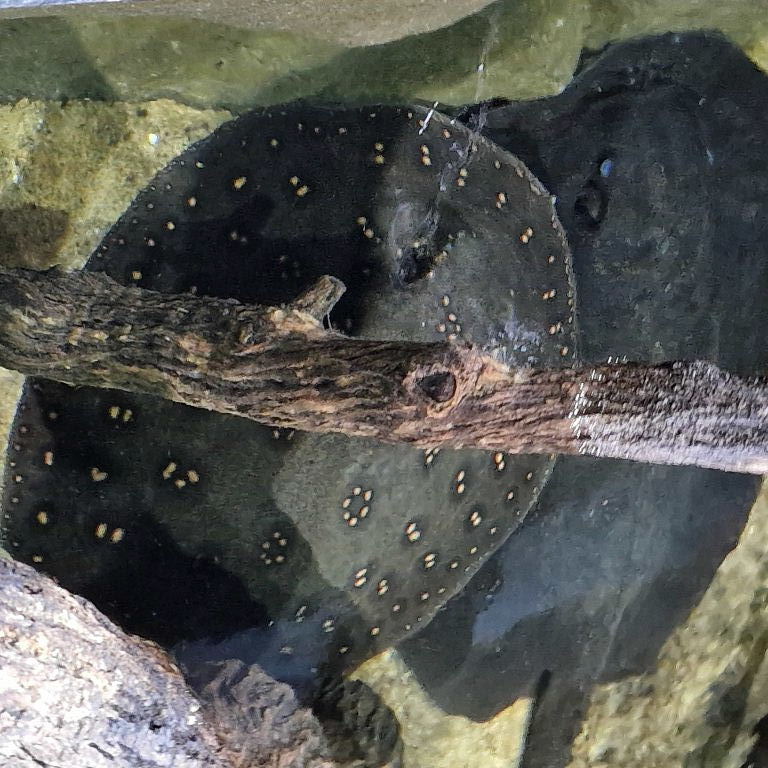


As they age, the spots fade (above left and centre). It is sometimes difficult to tell apart from versions of
the White-blotched River Stingray (above right). There is another river ray, the Red-blotched River Stingray, Potamotrygon ocellata,
also called Ocellated in its common and scientific names and, of course, there is a marine stingray called the Ocellated (Eagle) (Sting)ray.

